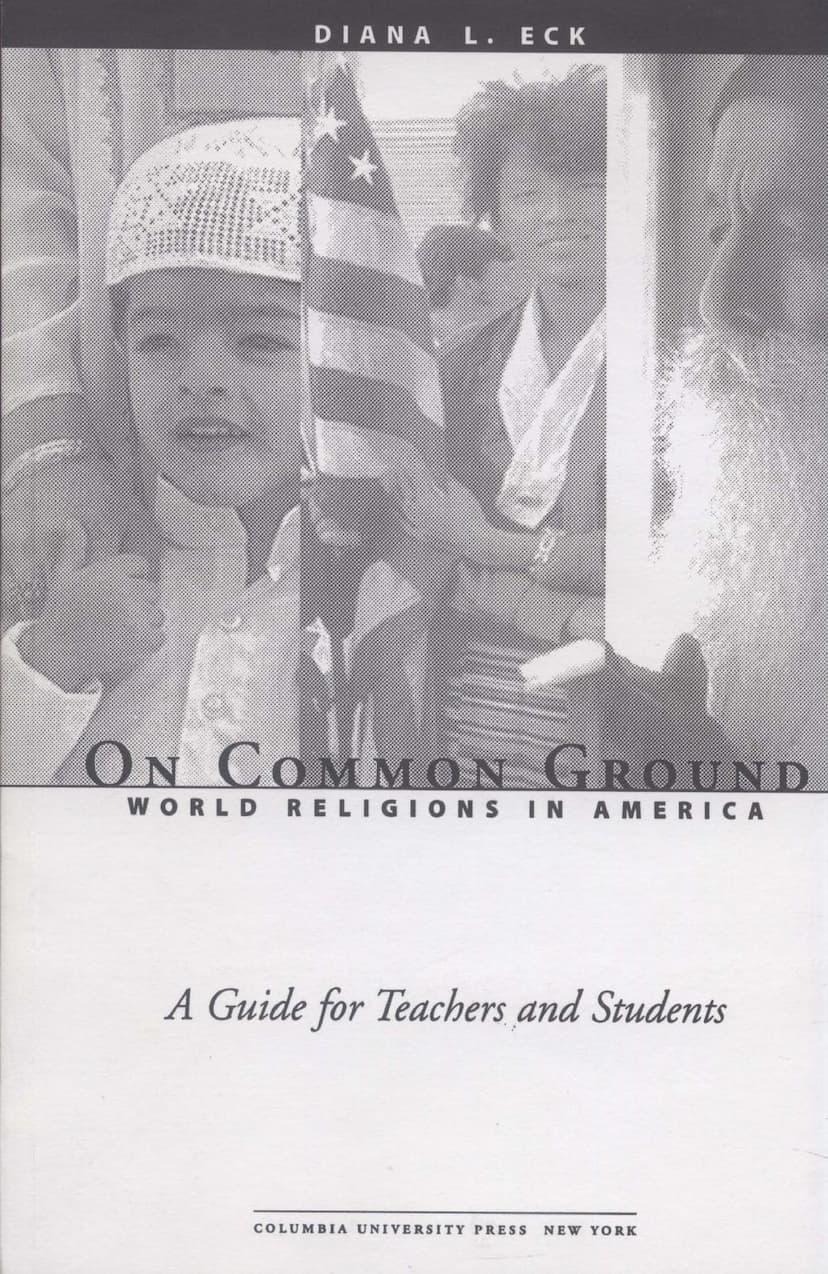On Common Ground World Religions In America
Added to library: September 2, 2025

Summary
This document is a guide for teachers and students using the multimedia CD-ROM "On Common Ground: World Religions in America" by Diana L. Eck. It outlines the structure and content of the CD-ROM, which aims to explore the changing religious landscape of the United States due to increased immigration and the growing diversity of faiths.
The guide is divided into several sections:
Preface:
- Introduces the CD-ROM as a comprehensive resource with text, images, sound, and primary documents for teaching, learning, and research.
- Highlights its multi-level approach, suitable for various age groups and educational settings.
- Explains the origins of the project, stemming from Harvard's Pluralism Project, which investigated how religious diversity is changing American cities and traditions.
- Poses three central research questions:
- How is the religious landscape changing with new religious communities?
- How are these traditions adapting and developing in America?
- How is America itself changing due to this broader religious pluralism?
- Frames the CD-ROM not as a finished product but as an invitation to explore one's own community.
Guide for Teachers and Students Sections:
The guide details the structure of the CD-ROM, which is organized into four main parts:
I. Getting Oriented:
- Provides an overview of the CD-ROM's contents, including introductory essays and a movie ("Voices of America") featuring diverse American religious perspectives.
- Highlights the "New Religious Landscape" section, which maps eighteen cities and regions with portraits of four hundred places of worship.
- Explains the "America's Many Religions" section, offering introductions to fifteen religious traditions and their practice in the U.S.
- Details the "Encountering Religious Diversity" section, which examines historical and contemporary interactions between different faiths, including essays and documents.
II. Introduction:
- Explains the "Home" screen's purpose in orienting users to the CD-ROM.
- "We the People..." Essay: Discusses how the 1965 Immigration Act fundamentally changed the U.S. religious landscape, making it one of the most religiously diverse nations. It emphasizes the American commitment to religious freedom as the bedrock of this diversity. The essay also traces the expansion of the American "we" to include various ethnic and religious groups, highlighting the ongoing challenge of understanding this evolving national identity. It provides early statistics on religious minorities in the U.S., noting the complexity of data collection.
- For Teachers and Students: Questions and Projects: Offers prompts for reflection and activity, such as analyzing the "Voices of America" movie, personalizing the meaning of America, observing religious diversity in one's community, and generating questions to guide exploration.
III. A New Religious Landscape:
- Introduces the section that visually depicts the changing religious geography of America through a map of eighteen cities and regions.
- "New Neighbors" Essay: Describes the visible presence of new religious communities (mosques, temples, gurdwaras) in American towns and cities, often becoming literal neighbors. It notes how these centers initially occupied repurposed buildings before more visible architectural developments.
- For Teachers and Students: Questions and Projects: Suggests activities like exploring specific cities, researching places of worship, investigating the history of a city's religious landscape, understanding the function of worship spaces, and examining zoning issues faced by religious communities. It also encourages personal research into local religious demographics.
IV. America's Many Religions:
- Details the section dedicated to understanding various religious traditions and their specific manifestations in the United States.
- "Rivers of Faith" Essay: Uses the metaphor of rivers to illustrate the dynamic, interconnected, and evolving nature of religious traditions, emphasizing their internal complexity and constant change.
- For Teachers and Students: Questions and Projects: Proposes activities such as defining "religion" based on the content, exploring specific religious traditions in depth, identifying common themes across traditions using the Comparative Thematic Index, examining the history of religious groups in America, and analyzing how traditions transmit their faith to the next generation.
V. Encountering Religious Diversity:
- Focuses on how Americans have historically and currently dealt with religious difference.
- "The Public Square" Essay: Defines the "public square" as a space for the free encounter of peoples and ideas, where religious differences are debated. It traces this encounter from early interactions with Native Americans to contemporary interfaith dialogues. The essay highlights the tension between the "melting pot" and "symphony" metaphors for American society.
- For Teachers and Students: Questions and Projects: Encourages analysis of interreligious encounters through the "Building Bridges" movie, examination of historical attitudes towards religious differences, exploration of the concept of religious freedom through historical documents and court cases, and discussion on issues like stereotypes, interfaith cooperation, and the role of religion in public schools.
VI. Documents for Reference:
- Lists numerous primary source documents and case studies referenced throughout the CD-ROM, categorized by the historical periods and themes discussed in the "Encountering Religious Diversity" section. These include missionary accounts, letters from religious leaders, legislative texts, court decisions, and reports on interreligious initiatives.
In essence, "On Common Ground: World Religions in America" is presented as a comprehensive educational tool that uses multimedia and diverse resources to help users understand the multifaceted religious life of the United States, the historical development of religious freedom, and the contemporary challenges and opportunities presented by an increasingly diverse population. It encourages critical thinking, personal reflection, and active engagement with the subject matter.